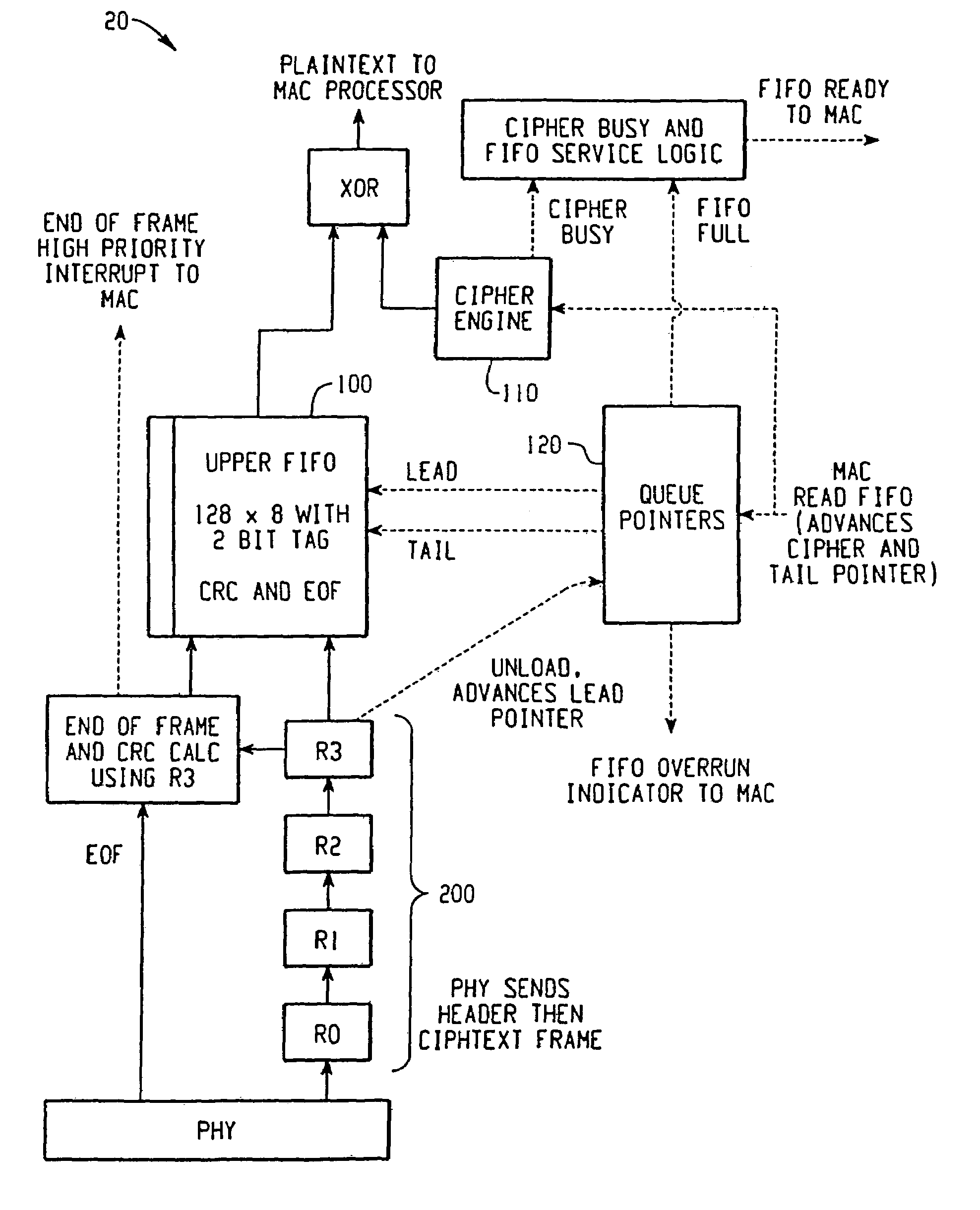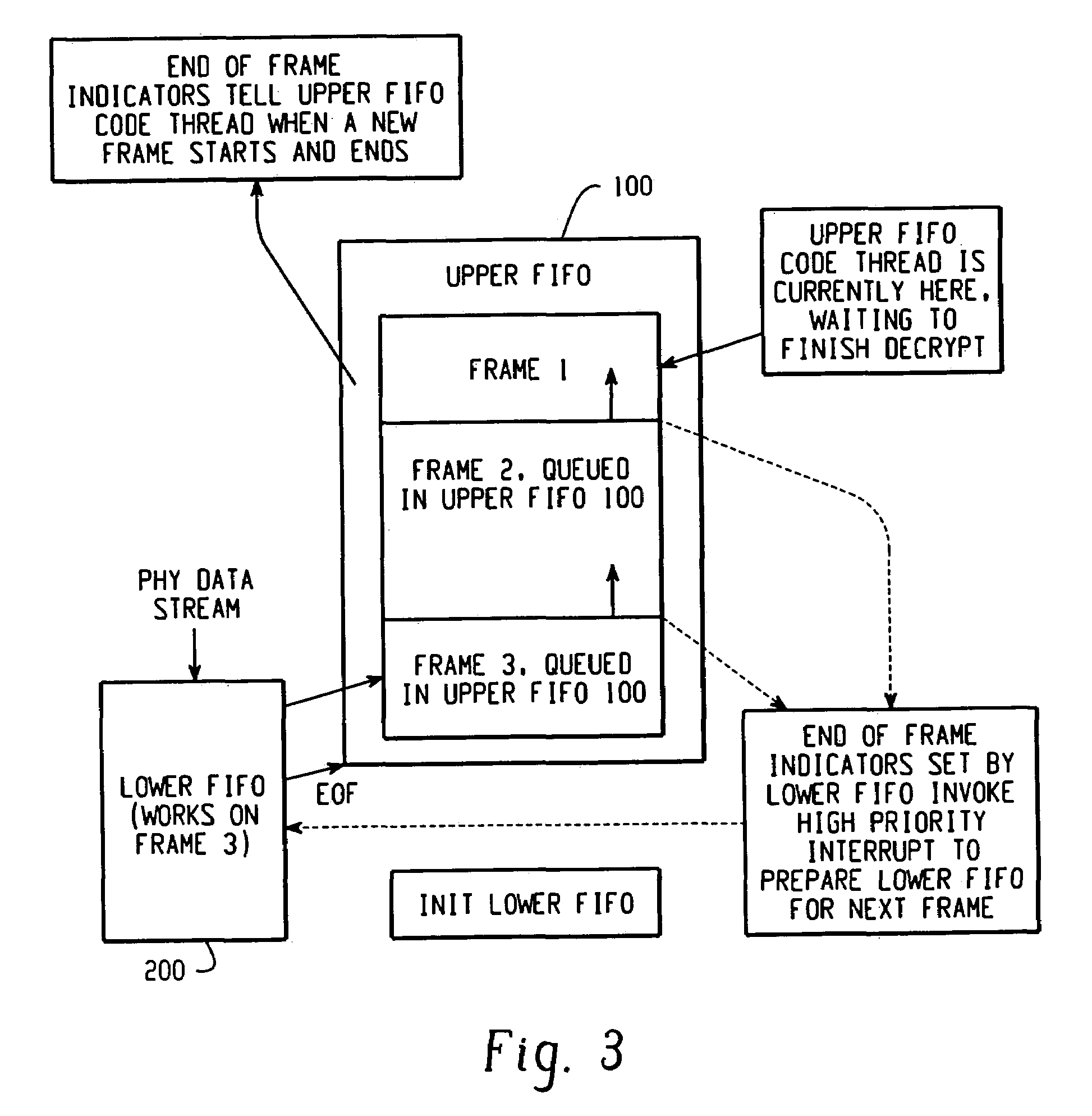Queuing system using dual receive FIFO
a dual-receiver, fifo technology, applied in the field ofqueuing systems, can solve the problems of difficult to meet the 10 s sifs (“short interframe space”) time requirement, inability to begin decryption processing, and difficulty in turning around the time between frames, so as to improve data throughput, reduce overhead associated with memory read/write operations, and improve data processing efficiency
- Summary
- Abstract
- Description
- Claims
- Application Information
AI Technical Summary
Benefits of technology
Problems solved by technology
Method used
Image
Examples
Embodiment Construction
[0029]Referring now to the drawings wherein the showings are for the purposes of illustrating a preferred embodiment of the invention only and not for purposes of limiting same, FIG. 2 shows a “receive path” block diagram of a queuing system 20 including a two-stage FIFO, in accordance with a preferred embodiment of the present invention. The two-stage FIFO is generally comprised of an upper FIFO memory 100 and a lower FIFO memory 200. Lower FIFO memory 200 will be explained in greater detail below. It should be appreciated that the rate at which data is transferred to lower FIFO memory 200 will at times be higher than the rate of a data decryption. This is caused by the initialization process of the cipher engine during which time the upper FIFO is effectively stalled. Therefore, queuing system 20 queues data associated with these data processing operations of differing rates.
[0030]In accordance with a preferred embodiment, lower FIFO 200 stores 4 bytes of data (e.g., received data...
PUM
 Login to View More
Login to View More Abstract
Description
Claims
Application Information
 Login to View More
Login to View More - R&D
- Intellectual Property
- Life Sciences
- Materials
- Tech Scout
- Unparalleled Data Quality
- Higher Quality Content
- 60% Fewer Hallucinations
Browse by: Latest US Patents, China's latest patents, Technical Efficacy Thesaurus, Application Domain, Technology Topic, Popular Technical Reports.
© 2025 PatSnap. All rights reserved.Legal|Privacy policy|Modern Slavery Act Transparency Statement|Sitemap|About US| Contact US: help@patsnap.com



